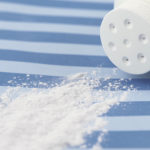After a Maryland jury awarded Brenda Brown nearly $1 million in damages in a medical malpractice case, the court overruled the jury, ruling the plaintiff’s neurosurgery expert witness did not comply with the state’s law limiting time spent on expert testimony activities. The court’s judgment in the case, which Brown brought against a neurosurgeon after her husband died from complications following back surgery, was upheld on appeal earlier this month and serves as a cautionary tale for attorneys who hire expert witnesses: Make sure the ratio of their time spent on the witness stand compared to their time at the bedside complies with applicable laws and will withstand challenges from opposing counsel.
State laws governing expert witnesses
In nearly all medical malpractice lawsuits, statutes mandate the presence of medical expert witnesses to educate the trier of fact and explain the standard of care so that the jury may render its decision. Different states have different requirements for expert witnesses regarding licensure, board certification, whether their specialty must match the defendant, and whether the expert must have an active clinical practice and/or engage in academic and research activities. Maryland law precludes doctors from testifying in medical malpractice cases if they devote more than 25 percent of their professional activity to expert testimony and related activities, such as reading the case materials in preparation for a case. At the time of the Brown case, the threshold was 20 percent; the statute was amended to increase the threshold from 20 to 25 percent on October 1, 2019.
Brown v. Falik & Karim P.A., et al.
Brown brought a lawsuit alleging medical malpractice against Dr. Joel Falik and Falik & Karim, P.A. The plaintiff was required to file a certificate of a qualified expert, and designated Dr. Sanford Dayne to testify that the surgery performed by Dr. Falik violated the applicable standard of care by failing to recognize that Brown’s husband was a high-risk patient who would benefit from a less invasive alternative to surgery. The certificate included the required statement that no more than 20 percent of the expert’s annual activities were to be spent on activities related to testifying as an expert witness. Dr. Falik’s legal team sought information regarding Dr. Davne’s income and activities in an effort to determine his compliance with the 20 percent rule, but Dr. Davne failed to produce any documents and later testified that he did not keep specific documentation relevant to compliance with the rule. In response, Dr. Falik filed motions to compel Dr. Davne’s tax documents and a motion to preclude him from testifying at the upcoming trial. The trial court granted Dr. Falik’s motion to compel but denied his motion to stop Dr. Davne’s testimony. At the conclusion of the case, Dr. Falik moved for judgment, arguing that Dr. Davne was not in compliance with the 20 percent rule and that without Dr. Davne, Brown had no evidence to support her claim that the standard of care had been violated. The trial court deferred its decision until after the jury’s verdict. The jury returned a verdict for Brown, awarding more than $911,000 in damages. After the trial, Dr. Falik filed a written memorandum renewing his motions for judgment. The trial court reconsidered and found that it had erred in allowing Dr. Davne to testify. It then granted a judgment notwithstanding the verdict, stripping Brown of the damages award. The Circuit Court for Prince George’s County heard an appeal on the case and sided with the lower court. “As plaintiff, Brown bore both the burden of producing sufficient evidence and the burden of persuading the trial court that Dr. Davne did not devote annually more than 20 percent of his professional activities to activities that directly involve testimony in personal injury claims,” the decision read. “To discern whether an expert is qualified to testify under this requirement, we must perform a mathematical equation: we must identify those activities that “directly involve testimony in personal injury claims” (the numerator) and then divide it by those activities that comprise the body of “professional activities” in general (the denominator).” Although Dr. Davne produced tax and other documents after the motion to compel, they “were insufficient to perform the calculation that the Court of Appeals has mandated.”
Why testifying too much is a problem
The purpose of Maryland’s 25-percent rule is to cut down on the use of “hired guns” – professional witnesses who earn considerable income testifying against other doctors rather than performing actual patient care. Even in states without relevant laws specifying the ratio of expert witness work to other professional activities, the use of so-called “professional witnesses” is an ethical and professional black hole. The logic is that witnesses who derive substantial income from expert testimony may be more motivated by their paycheck than an unbiased desire to see justice prevail. As a result, they are vulnerable on cross-examination and subject to more cynical scrutiny by the trier of fact. The implicit argument is that without a rigorous practice in the trenches of clinical medicine, an “expert” cannot truly inform the jury about the applicable standard of care.
The irony is that an expert witness may be the only job where too much experience counts against a candidate. When you need a new roof, you look to hire a contractor that has put up hundreds of roofs. When you need heart surgery, you’re inclined to seek out a highly experienced heart surgeon. But when hiring an expert witness, avoid professional experts and instead seek practicing physicians and surgeons who unquestionably comply with statutory requirements.




